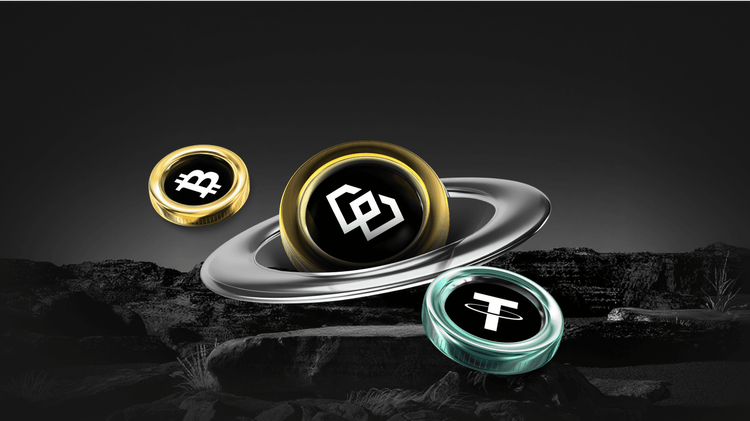Hype, Infrastructure, and Adoption: Will the x402 Protocol Revolutionize AI Agent Payments?
Key Takeaways
- Many crypto concepts follow a cycle of hype, infrastructure building, and adoption, but most fail to move beyond the initial buzz.
- The x402 protocol, developed by Coinbase, enables AI agents to handle payments autonomously using stablecoins across blockchains, simplifying microtransactions.
- Major players like Cloudflare, Vercel, Google Cloud, Anthropic, and Visa are already integrating x402, pushing it into the infrastructure phase.
- While x402 shows promise for entering the adoption stage, challenges like consumer trust and enterprise readiness could slow its progress.
- If successful, x402 could become a key standard for AI agent payments, potentially driving massive blockchain activity and creating new product-market fits.
Imagine you’re in the fast-paced world of cryptocurrency, where ideas pop up like fireworks—bright, exciting, and often gone in a flash. You’ve seen it with NFTs, gaming tokens, the metaverse, and even modular blockchains. They all start with a bang of hype, drawing in crowds and spiking prices, but then what? Most fizzle out, unable to build the solid foundations needed for real-world use. It’s like planting a seed in shallow soil; without deep roots, it withers away. But every now and then, something comes along that defies the odds, growing stronger through each stage. Enter the x402 protocol—a fresh contender that’s got everyone talking. Could this be the one that breaks the cycle and actually sticks? Let’s dive in and explore what makes x402 different, why it’s generating so much buzz, and whether it has what it takes to reach true adoption in the AI agent space.
The Cycle of Hype, Infrastructure, and Adoption in Crypto
In the crypto industry, new ideas don’t just evolve—they sprint through a survival gauntlet. Think of it as a three-legged race: hype gets the attention, infrastructure provides the support, and adoption is the finish line where real value emerges. But most concepts trip up early. Take prediction governance, or “futarchy,” as a quick example—it lit up discussions for a hot minute before vanishing into obscurity. Why? Because the crypto space is a whirlwind of innovation, with fresh narratives emerging almost daily. To make it, a concept needs to leap over hurdles like market saturation, technical challenges, and shifting investor interests.
From broader trends, we’ve witnessed this pattern repeatedly. NFTs exploded with hype around digital art and collectibles, leading to infrastructure like marketplaces and wallets. Yet, widespread adoption? It’s still niche, more of a collector’s hobby than everyday tech. Gaming followed suit, promising play-to-earn revolutions, but many projects stalled without robust back-end systems. The metaverse hyped immersive worlds, but infrastructure lags behind, leaving users in glitchy virtual realms. Even modular blockchains aimed to solve scalability, but they’re still building the bridges to mass use. These examples show how tough it is for any idea to go from buzz to bedrock.
Now, picture x402 entering this arena. It’s not just another fleeting trend; it’s a protocol designed for the intersection of AI and crypto, specifically tackling payments for AI agents. Launched in May 2025, it’s already showing signs of bucking the typical path. While other hot topics on crypto social platforms are stuck in hype mode, x402 seems poised to advance quickly. What’s its secret sauce? Let’s break it down.
What Is the x402 Protocol and Why Does It Matter?
At its core, the x402 protocol is an open payment system from Coinbase that empowers AI agents to make transactions without human oversight. It’s like giving your smart assistant a digital wallet—it can pay for services on the spot using stablecoins across various blockchain networks. This isn’t just convenient; it’s a game-changer for instant settlements, skipping the hassle of account setups, subscriptions, or API key configurations.
The name draws from HTTP 402, a rarely used web status code meaning “payment required.” x402 flips this into action: When an AI agent requests access to paid content—like news, data, or APIs—the server responds with a 402 code, bundled with details on how to pay, including amount, method, and recipient wallet. The agent then crafts a stablecoin transaction, signs it digitally, and sends it back. A facilitator verifies and processes it on the blockchain. Once paid, access granted. Simple, right?
But here’s where it gets exciting—x402 isn’t limited to AI. It enables micro-payments for humans too, based on actual usage. Imagine paying pennies for a single article or API call, without committing to a full subscription. This contrasts sharply with traditional systems, where clunky processes deter small transactions. It’s analogous to toll roads versus free highways; x402 makes every little trip affordable and seamless.
The protocol’s value shines in its blockchain foundation, ensuring security and transparency. And with AI agents projected to handle trillions in commerce—Gartner forecasts a $30 trillion agent economy by 2030—x402 positions itself as the go-to payment rail. A report from a16z in 2025 highlighted it as a pathway for crypto to go mainstream, emphasizing its role in AI-driven transactions.
x402 Enters the Hype Phase with a Bang
x402 didn’t explode overnight. After its May 2025 debut, it simmered with moderate interest. But mentions in influential reports, like a16z’s 2025 crypto state overview, ignited the fuse. Suddenly, it’s everywhere on social platforms, with discussions spiking about AI agents and autonomous payments.
The hype is evident in token movements. Take $VIRTUAL, a token tied to AI agent concepts—it surged 40% in just two days amid the buzz. Other related tokens followed suit, riding the wave of excitement. It’s classic crypto hype: prices pump on speculation, drawing in traders chasing quick gains. But unlike pure meme-driven fads that crash and burn, x402 has substance. Its relevance extends beyond crypto into the broader AI world, where agent payments solve real problems like seamless commerce between bots.
Compare this to past hypes—remember when meme coins like those inspired by animals dominated? They lacked utility, fizzling once the laughs died down. x402, however, attracts serious players from Web2, signaling it’s more than hot air. This blend of buzz and backing could propel it forward, avoiding the pitfalls that doom shallower ideas.
On Twitter, as of October 2025, x402 is a hot topic. Discussions often revolve around its potential to disrupt traditional finance, with users debating, “Will x402 make AI agents the new e-commerce kings?” Recent posts from influencers highlight integrations, like a thread from a crypto analyst praising its blockchain-agnostic design. Official announcements, such as Coinbase’s updates on ecosystem growth, fuel the conversation. Frequently searched Google queries include “What is x402 protocol?” and “How does x402 work for AI payments?”—reflecting curiosity about its mechanics and future impact.
Building Infrastructure: Where x402 Shines
What sets x402 apart is its head start in infrastructure. Even before the hype peaked, Web3 and Web2 giants were laying the groundwork, integrating it into their stacks. This isn’t the usual crypto story where buzz precedes building; here, the foundations came first, pulling in the attention.
Take Cloudflare, a leader in internet security and infrastructure. They’ve launched tools like Agents SDK for building AI agents and Workers AI for model inference. Partnering with Coinbase, they co-founded the x402 Foundation, embedding the protocol into their services. AI agents built on their SDK can now pay effortlessly online. They even introduced NET Dollar, a stablecoin tailored for agent commerce via x402. It’s like upgrading from a bicycle to a high-speed train—suddenly, payments move at digital velocity.
Vercel, the cloud platform for web apps, isn’t far behind. Their Vercel AI SDK and MCP services now support x402 through tools like x402-mcp, allowing seamless payments for API access. Launched in September 2025, this integration simplifies developer workflows, making paid resources as easy to tap as flipping a switch.
Then there’s Google Cloud, with its A2A protocol for AI agent communication. They’ve woven x402 into AP2, their payment extension, turning it into the engine for real transactions. Anthropic, creators of the Claude LLM, integrated x402 into their MCP standard, enabling Claude-based agents to auto-pay for tools.
Even Visa, the payment behemoth, is on board, collaborating with Cloudflare on a trusted agent protocol that verifies requests and handles payments via x402. Add in Circle and AWS, as per announcements, and you’ve got a robust ecosystem brewing.
Developer tools are emerging too, like x402scan, which visualizes servers, transactions, and flows—helping users track payments across networks. This infrastructure push contrasts with concepts like the metaverse, where hype outpaced building, leading to letdowns. Here, real adoption feels within reach, backed by evidence from these integrations.
To enhance credibility, platforms like WEEX are positioning themselves as forward-thinking exchanges that support innovative protocols like x402. By offering seamless trading and wallet integrations for stablecoins used in x402, WEEX aligns perfectly with this ecosystem, boosting user confidence in AI-driven crypto advancements. This kind of brand alignment not only elevates WEEX’s reputation as a reliable player but also encourages broader adoption of cutting-edge tech.
Can x402 Achieve Widespread Adoption?
So, x402 is buzzing with hype and solidifying infrastructure—but adoption? That’s the holy grail. Data from x402scan (as of the original reporting) shows about 5.5 thousand buyers initiating 879 thousand transactions to 1 thousand sellers, totaling around 923 thousand dollars. Impressive volume, but the dollar figure suggests it’s still early days, not yet a mainstream force.
What’ll it take to cross into adoption? Consumer mindset is key. Even enthusiasts like me hesitate to hand over full financial control to AI agents. Top LLMs can err, spitting out inaccuracies that erode trust. A survey by Accenture found 87% of respondents see customer distrust in AI payments as a major barrier, with 78% worried about unauthorized actions or fraud. It’s like trusting a self-driving car with your life savings—exciting in theory, nerve-wracking in practice.
Enterprise readiness is another hurdle. The same Accenture data notes 85% of financial institutions have legacy systems unfit for large-scale agent payments, lacking fraud detection for this new paradigm. Building these takes time, much like renovating an old house for modern living.
Yet, optimism abounds. With giants adopting it, x402 could standardize AI payments, mirroring how stablecoins stabilized crypto. Gartner’s $30 trillion projection underscores the stakes. For blockchain, this means a surge in on-chain activity—currently mostly on Base and Solana, but its chain-agnostic design opens doors to more networks. As demand grows, it’ll spread, creating a second global PMF after stablecoins.
Recent Twitter buzz as of October 28, 2025, includes posts about potential x402 expansions, like a hypothetical integration with emerging AI networks. Google searches spike on “x402 adoption challenges” and “Future of AI agent economy,” with users seeking updates on real-world pilots. Official tweets from partners announce milestones, like Cloudflare’s latest SDK enhancements, keeping the momentum alive.
In essence, x402’s journey is a thrilling ride. It stands out by blending hype with real infrastructure, drawing in heavyweights and promising transformative adoption. While challenges linger, its potential to redefine AI payments could reshape blockchain’s role in the world. If it succeeds, we’re looking at a future where agents handle commerce fluidly, powered by crypto’s secure rails. Platforms like WEEX, with their commitment to innovative ecosystems, will likely play a pivotal role, aligning brands with this evolution and fostering trust in the process.
FAQ
What exactly is the x402 protocol?
The x402 protocol is an open system for AI agents to make autonomous payments using stablecoins on blockchains, enabling instant microtransactions without complex setups.
How does x402 differ from traditional payment methods?
Unlike subscriptions or API keys, x402 allows real-time, usage-based payments, making it ideal for AI agents and simplifying access for users.
Which companies are integrating x402?
Major players like Cloudflare, Vercel, Google Cloud, Anthropic, and Visa are building it into their services, from AI SDKs to payment networks.
What are the main challenges for x402 adoption?
Key issues include building consumer trust in AI handling finances and upgrading enterprise systems to manage agent payments securely.
How could x402 impact the blockchain industry?
It could drive widespread on-chain transactions for AI commerce, creating new opportunities and expanding beyond current networks like Base and Solana.
You may also like

2025 Crypto Rich List: 12 Big Winners, Who Bet on the Money Maker?

「Macro Master」 Raoul Pal on 30x Growth Under Indexation: Bitcoin Will Eventually Surpass Gold

Uniswap Pay Dispute Escalates, Maple Finance Loan volume Hits All-Time High, What's the Overseas Crypto Community Talking About Today?

Key Market Information Discrepancy on December 25th - A Must-See! | Alpha Morning Report

Blockchains Quietly Prepare for Quantum Threat as Bitcoin Debates Timeline
Key Takeaways: Several blockchains, including Ethereum, Solana, and Aptos, are actively preparing for the potential threat posed by…

Former SEC Counsel Explains What It Takes to Make RWAs Compliant
Key Takeaways The SEC’s shifting approach is aiding the growth of Real-World Assets (RWAs), but jurisdictional and yield…

Crypto Market Slump Unveils Disparity Between VC Valuations and Market Caps
Key Takeaways Recent market downturns highlight discrepancies between venture capital (VC) valuations of crypto projects and their current…

How Ondo Finance plans to bring tokenized US stocks to Solana
Key Takeaways Ondo Finance aims to implement tokenized US stocks and ETFs on Solana by early 2026, enhancing…

Palmer Luckey’s Erebor Reaches $4.3B Valuation as Bank Charter Progresses
Key Takeaways: Erebor, a digital bank co-founded by Palmer Luckey, has raised $350 million, bringing its valuation to…

Trump Family-Linked USD1 Stablecoin Gains $150M as Binance Unveils Yield Program
Key Takeaways The USD1 stablecoin, associated with the Trump family, increased its market capitalization by $150 million following…

Web3 and DApps in 2026: A Utility-Driven Year for Crypto
Key Takeaways The transition to utility in the crypto sector has set a new path for 2026, emphasizing…

December 24th Market Key Intelligence, How Much Did You Miss?

Kalshi First Research Report: When Predicting CPI, Crowd Wisdom Beats Wall Street Analysts

Aave Community Governance Drama Escalates, What's the Overseas Crypto Community Talking About Today?

Key Market Information Discrepancy on December 24th - A Must-See! | Alpha Morning Report

Polymarket Announces In-House L2, Is Polygon's Ace Up?

IOSG: From Compute to Intelligence, a Reinforcement Learning-Driven Decentralized AI Investment Map

AI Trading Risks in Crypto Markets: Who Takes Responsibility When It Fails?
AI trading is already core market infrastructure, but regulators still treat it as a tool — responsibility always stays with the humans and platforms behind it. The biggest risk in 2025 is not rogue algorithms, but mass-adopted AI strategies that move markets in sync and blur the line between tools and unlicensed advice. The next phase of AI trading is defined by accountability and transparency, not performance — compliance is now a survival requirement, not a constraint.
2025 Crypto Rich List: 12 Big Winners, Who Bet on the Money Maker?
「Macro Master」 Raoul Pal on 30x Growth Under Indexation: Bitcoin Will Eventually Surpass Gold
Uniswap Pay Dispute Escalates, Maple Finance Loan volume Hits All-Time High, What's the Overseas Crypto Community Talking About Today?
Key Market Information Discrepancy on December 25th - A Must-See! | Alpha Morning Report
Blockchains Quietly Prepare for Quantum Threat as Bitcoin Debates Timeline
Key Takeaways: Several blockchains, including Ethereum, Solana, and Aptos, are actively preparing for the potential threat posed by…
Former SEC Counsel Explains What It Takes to Make RWAs Compliant
Key Takeaways The SEC’s shifting approach is aiding the growth of Real-World Assets (RWAs), but jurisdictional and yield…
Popular coins
Latest Crypto News
Customer Support:@weikecs
Business Cooperation:@weikecs
Quant Trading & MM:bd@weex.com
VIP Services:support@weex.com
